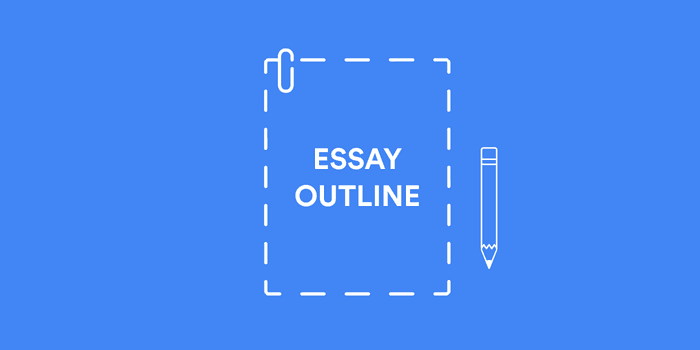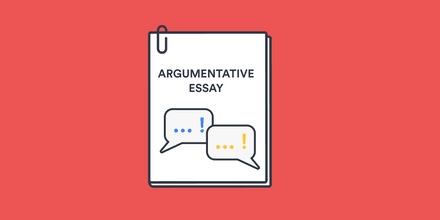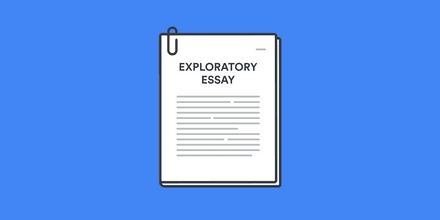
Whether you’re a researcher, an academic, or a student, knowing how to write an outline for an essay will be an essential skill.
Despite how important it is, there are all too many individuals out there carrying on with the writing process without knowing how to write effectively. Creating an outline for your next essay can help you to structure your thoughts more clearly before you put them down on paper.
The advantages of working on a paper outline first are numerous; besides planning your answers, you’ll be able to organize them for better flow and ensure you haven’t missed anything important. An organized outline leads to an organized paper, which will have a better chance of being published or getting a good grade.
We’ve put together all the basics behind writing an outline for an essay in this easy guide:
Before writing your outline
You’ve been assigned a topic or you have a thesis statement that needs to be put onto paper. Before you jump into writing the final essay, you’ll want to create an outline that you can work from. The problem is there are a few things that need to be done before you can start essay writing.
It’s essential to look at the writing assignment carefully. If you’re a student, pay attention to the marking rubric and try to get a good idea of what your teacher or lecturer is looking for.
To write a strong outline, you'll ultimately need to make sure you've reviewed all the resources given and that you are approaching it from the right angle.
The basic parts of essay outlines
Every essay or research paper has to have a structure, and this is what you should also attempt to do in your essay outline. Broken down into the most basic parts, every essay outline should have:
- A strong introduction or thesis statement
- A body, or arguments and counterarguments
- A conclusion that reiterates the thesis statement and summarizes key thoughts
Your outline should ideally be structured so that your arguments are ranked in terms of their importance. You can imagine your outline having four layers of organization - the first two layers are the more general, and the following layers go into more detailed information from there.
Since you’re working on an outline first, you can easily shift around arguments and supporting statements to make sure the final project will be suitable for publishing or marking.
Remember to check carefully for any repetitive ideas or statements and to think about the audience you are writing for. More than a basic essay that follows the assignment prompt, you want to try and use different writing techniques to make the paper an interesting read and cater your writing to your audience.
Language in outlines
Even though you’ll be working on a rough outline, it will be important to focus on the language you’re using from the beginning. Paying attention to language now will get you in the right headspace for writing your full essay and help you avoid mistakes that can affect your essay later on.
Ask yourself, is my outline grammatically correct and consistent? Are my headings correct? Typically, your main headings should be more general with each sub-heading becoming more specific as it explains your answers.
Even within the basic structure of your outline, you want to make sure that you are using complete sentences while in the process of writing. Use the outline to make note of interesting terminology and theories you want to add to the final essay.
Formatting your essay outline
Your essay outline should adhere to the requirements provided along with the essay topic - this is what makes taking that first step to evaluate everything so important
The majority of essays are structured using an alphanumeric structure, but there are other options like the decimal outline structure. It all comes down to what the teacher or lecturer has asked for.
If there is no prior requirement, you can use the system of your choosing. In this case, just be sure to remember that consistency is key - you want to use the same system all throughout your outline and eventual essay.
The alphanumeric structure is a common type of outline formatting system that uses the following characters for headings:
- Roman numerals
- Capital letters
- Arabic numerals
- Lowercase letters
The decimal system on the other hand is similar but has the additional purpose of showing how every part of the outline relates to the rest of the essay. Instead of numerals and letters, a decimal outline uses decimals when formatting headings and sub-headings.
Formatting will be especially important when it comes to doing your references. You can have all the credible sources in the world in your paper, but if they aren't formatted in the proper reference style they may affect your overall score. This can be crippling when you're handing in an academic paper or another essay type that requires a common structure and some critical thinking.
Writing your essay outline
When you’re ready to start writing your essay outline, it’s best to take a step by step approach.
The first thing you want to do is to carefully consider the subject. Is the essay meant to be argumentative, narrative, or expository? Different categories will require different types of outlines - narrative essays for example will have a structure that is unlike the format used in an analysis essay.
It may be worthwhile to take some time to brainstorm all of the topics or ideas you want to write about and to choose the one you feel has the most potential from the shortlist. This is also a good opportunity to connect related ideas and strengthen your paper even further.
The next step is to take your list of organized ideas and structure them into an essay outline. When working on this part, you should organize your ideas by the level of importance. Think about how you can introduce these topics, give an explanation for them, and what conclusions can be drawn from them as an ending to your essay. Don't go into too much detail.
From there, you’ll want to write headings and subheadings based on the ideas you have gathered. Headings are one of the most underrated parts of writing an essay, but they too play a huge role in the success of a paper.
The secret to writing great headings is to make sure that everyone you put down adheres to the following guidelines:
- Does the reader understand the essay content?
- Is each content section clear?
- How does each section relate to the other sections?
If you’re unable to say “yes” to all the above, your headings will need some additional work.
When all of the above has been completed, you can start to fill in the body of your outline with your ideas and some rough sentences that you can build on in the final version.
Essay outline example
As mentioned above, your outline is essentially broken down into multiple layers of organization. Let's take a closer look at how this will work in practice.
Layer one is the most generalized section of the outline and will contain an introduction to the ideas you'll be discussing in the paper, and the conclusion. Think of this as the elevator pitch of your research. You can expect layer one to look like the following:
Topic: Stress levels associated with remote work I. Introduction A. What is remote work? B. Increase in reported stress levels from surveyed remote workers C. Supporting statistics II. Common stressors for remote workers A. Explanation of stressors unique to remote workers B. Risk of high levels of stress C. How remote workers handle stress III. Remote companies A. How companies are responding to remote worker stressors B. Responsibilities of the company versus employee C. Potential solutions to explore further IV. Conclusion A. Summary of facts B. Summary of statistics C. Concluding statement
From the above, you can see that the main points of the example outline are separated into their own sections. Every main idea you introduce should have at least one or two supporting statements before you add another main idea.
Final thoughts
The chances are good that you will write many essays in your life, and hopefully, with the knowledge in this guide in hand, the process of outlining them will be easier each time.
Writing an outline might be a bit more time-consuming than jumping into the full paper immediately, but the final product is much more likely to excel. By taking the time to prepare a strong outline, you’ll be ensuring that you can create a better paper much faster.
Frequently Asked Questions about Writing an outline for an essay
1️⃣ What is an essay outline?
Creating an outline for your essay will help you structure what you want to write, and usually contains a few bullet points under each section you plan to add. An outline is just a very rough plan for the paper you plan to write.
♨️ How do you write a perfect essay?
Perfecting your essay will come down to understanding the relevant literature, offering a fresh take with a strong opening hook, and keeping to the rubric set for the assignment. Once you've finished your first draft, try to read it objectively and improve any of the weak points you spot.
🧐 What are the 4 types of essays?
The four types are expository, descriptive, narrative, and argumentative. An expository essay is an essay that takes a closer look at an idea and evaluates the relevant evidence, while a descriptive essay describes an experience with a person, a place, or situation.
Narrative essays tell a story - anecdotal or personal experiences that are written creatively. Lastly, an argumentative essay tries to prove a point by investigating a topic and the evidence related to it.
🗂️ How many paragraphs is an essay?
This will highly depend on the type of assignment. If no specification is given, try to start with five paragraphs on the main topics and expand on sub-topics as needed. Prioritize your strongest points and only add supplemental ones to support them.
✍️ How can I improve my essay writing skills?
Give yourself a refresher on grammar and vocabulary rules, plan a solid outline and make sure you have carefully analyzed your research sources. Reading more papers will also help you improve your writing skills.


